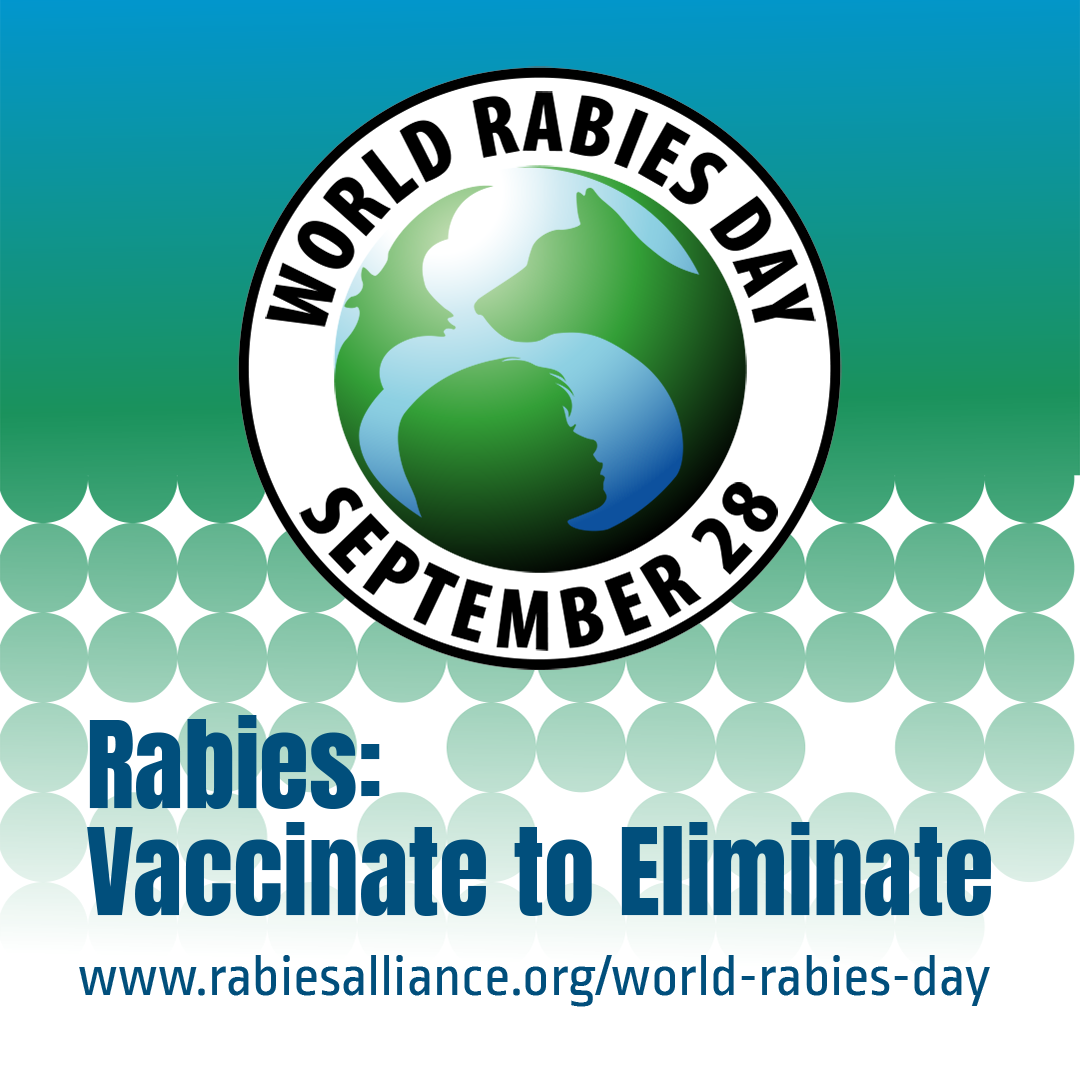
With World Rabies Day just around the corner, and several cases of rabies reported in people this summer – yes, in North America – rabies awareness is forefront in the minds of public health officials, doctors, and veterinarians. While cases of human rabies in North America are rare, the number of cases in developing countries are in the thousands each year – the victims typically children.
Rabies is a fatal viral disease that can be found in wildlife populations including skunks, raccoons, foxes, bats, and coyotes. Rabies is most often transmitted via a bite from a rabid animal but can be transmitted whenever saliva of an infected animal comes in contact with broken skin or mucous membranes. Once the symptoms of rabies appear, there is no treatment.
The Global Alliance for Rabies Control (GARC) works with many global partners (including the World Health Organization, Food and Agriculture Organization of the United Nations, World Animal Protection, Pan American Health Organization, and the World Veterinary Association, among others) to increase community awareness of rabies and how it can be prevented. September 28th marks the 13th World Rabies Day – a day to focus on this fatal disease and the ways to reduce the threat. This year’s theme, Rabies: Vaccinate to Eliminate, focuses on vaccination – the foundation of all rabies control efforts.
GARC raises awareness globally and encourages national governments to put resources into eliminating rabies. Locally, awareness is raised by promoting the vaccination of dogs (the main source of human rabies deaths), educating the public about dog behavior (especially school-aged children), endorsing immunization programs for people with high risk occupations or who travel to, or live in, high-risk areas, and helping people receive post-exposure prophylaxis (PEP). https://rabiesalliance.org/world-rabies-day
It’s easy to become complacent with the vaccination of dogs – and other pets as well – even when it comes to a disease as dangerous as rabies. Although canine rabies (a strain of rabies virus that circulates specifically in the dog population) has been eradicated in North America, pets can acquire rabies from wildlife and expose people to it. Even though in North America human rabies occurs most commonly after exposure to wild animals, with several cases of human rabies in several communities this year, the vaccination of pets remains important. Vaccination may save your pet’s life – and yours too!
You can help!
- Vaccinate your cat, dog, or ferret, even if it’s “indoor” only.
- Supervise your pets when they are outside.
- Teach your children to avoid contact with wildlife and never approach or touch ANY unfamiliar animals.
- If you find a sick animal or one that is acting strangely, contact your local animal control agency. Do not touch it or try to capture it.
- If you find a bat in your home and it may have been there when people were sleeping, contact your public health department for further instructions.
- Do not leave pet food or unsecured garbage outside – it will attract wildlife to your yard, increasing the chances of a wildlife encounter.
Spread the word about World Rabies Day and visit www.rabiesalliance.org/world-rabies-day for more information on ways you can become involved.